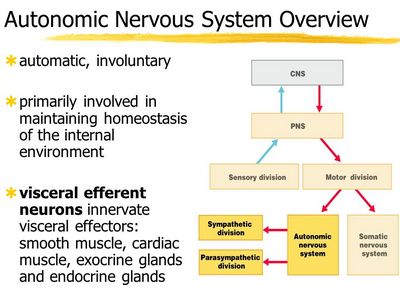Understanding the Functions of the Autonomic Nervous System

The autonomic nervous system is the network of nerves and muscles in all vertebrates that control and regulate the internal functions of the body without any conscious awareness or involvement of the body. The central nervous system is part of this network. The system monitors breathing, heart rate, digestion, metabolism and temperature.
The five basic senses are touch, smell, hearing, taste, and sight. The brain sends a message to the central nervous system, which in turn sends messages to the autonomic system through the nerves that sense touch, smell, taste, and sight. Internal sensors and actuators are composed of neurons that respond to stimulation from the external environment. The senses that the brain uses to read the outside world include the eyes, ears, nose, tongue, throat, and mouth.
AHS is a system of twelve subsystems, each with many different functions. The first is the "Git" subsystem, which is responsible for the movement and maintenance of body muscles and coordination of all movements. The second subsystem is the “Skin” subsystem, which regulates the production of heat, heat and cold, and also regulates body temperature.
The third subsystem is the "Heart" subsystem, which is responsible for the production and transmission of energy in the form of heat or movement due to the body’s resistance to external stimuli. The fourth is the "endocrine" subsystem, which is responsible for regulating the body’s excretory system
and releasing hormones and neurotransmitters. The fifth is the "reproductive" subsystem, which is responsible for the reproduction and development of organisms and cells.
The sixth subsystem is the "Nervous" subsystem, which is responsible for coordinating the activities of all other subsystems. It also includes the "Mental" and "Emotional" systems. The seventh is the "social" subsystem, which is responsible for communication between group members and the information they provide to others. It includes the "abdominal" subsystem, which is responsible for controlling heart rate and regulating blood pressure.
Each organ or system is divided into a separate section called the sensory organ. for information received by the body, a motor organ for movement and sensation, and a motor or sensory organ for information received by the brain.
The function of each organ in the system "reacts" to irritation of the nervous tissue. Nerve tissue stimulates these parts of the body, consciously or unconsciously, and in any case, it affects them in a certain way. The effect is achieved through the interaction of nervous tissue and sensory organs.
The body is in constant communication with the environment and with itself. It has an "automatic" mode and an "internal" mode. Automatic mode is a mode in which the body "knows" when and where it is, internal mode is a mode in which it "knows" what to do and how to do it.
Internal communication occurs through the nervous tissue, which allows you to control the functions of the body at a certain level. When this is interrupted, a certain level of control is lost and the result can be pain, fatigue, illness, malaise, and death. This means that in order to maintain the normal health of the human body, it must constantly be in contact with the environment.
To control himself, he must have a nervous system in which the nerves can send signals to other parts of the body. If the nervous system does not function normally, then the body cannot properly respond to external stimuli.
The nervous system is a complex system, complex, but simple from the point of view of understanding. It consists of the following sections: "Cruelty", "Cardiac", "Respiratory" and "Spinal" systems. Each of these sections is responsible for different processes and participates in the management or modification of the functions of other sections.
One of the most important functions of the autonomic nervous system is to maintain the comfort and health of the body. For example, it prevents illness and disease by weakening or suppressing the immune system and regulating the functions of the immune system. It also regulates the amount of nutrients, fats and water in the body. It also helps regulate blood pressure and heart rate, regulates body temperature, blood pressure, and is responsible for controlling breathing.